CRAWFORD AND VERNON COUNTIES - The Ostrem Family Farm in is located in Vernon County’s Franklin Township, which makes up the northern part of the Tainter Creek Watershed.

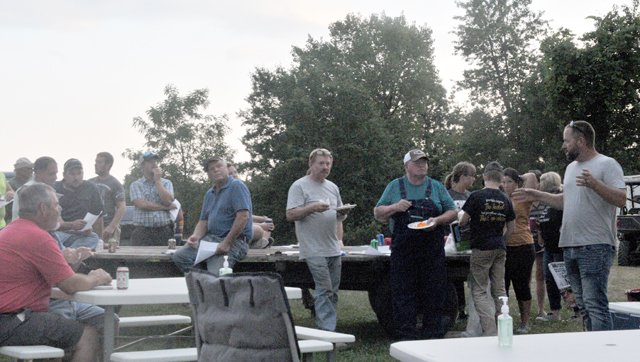
The Ostrems have recently partnered with the Tainter Creek Watershed Council and the Wallace Center Grazing Project in an innovative land use that they hope will help to protect Tainter Creek. About 50 members of the watershed council gathered at the Ostrem farm for a field day and meeting on Thursday, August 27.
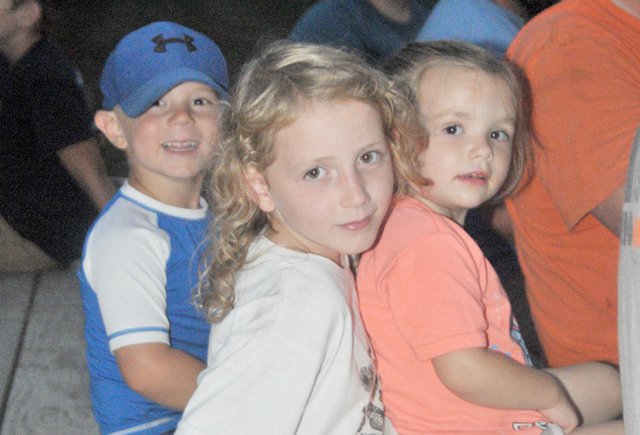
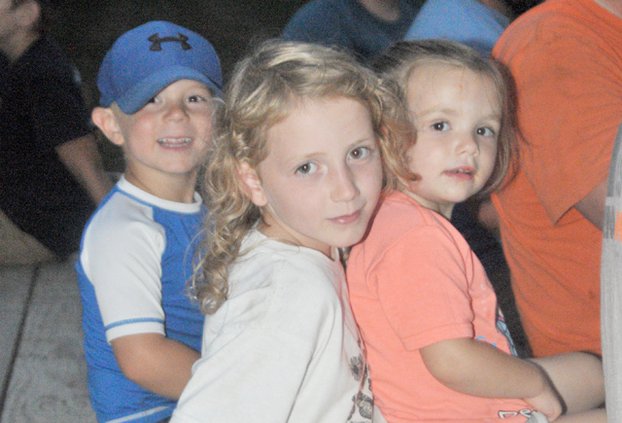
Jeff and Karen Ostrem, and their son Josh, farm 160 acres in the headwaters of Tainter Creek. The farm first came into their family in the prior generation when Jeff’s parents, Herbert and Dorothy Ostrem purchased the land from their neighbor Grant Rudrud. The family produces crops, and now beef cattle on the farm.

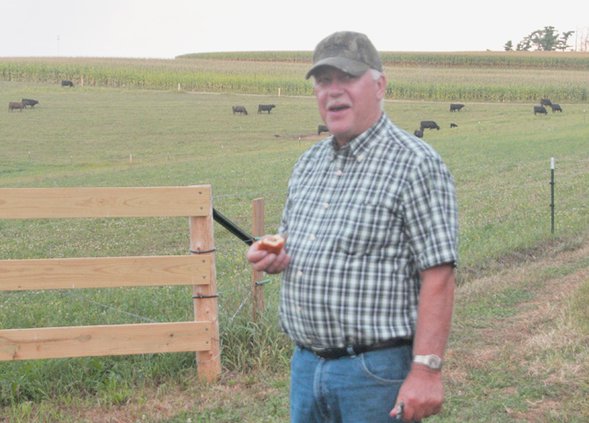
The project on their farm involved conversion of 50 acres of their cropland and continuous grazing pasture up above the creek into a managed rotational grazing system for beef cattle. The ground was seeded in the spring into a 50 percent alfafa and clover mix, with oats as a nurse crop. The funding from the Wallace Center allowed the family to install perimeter and paddock fencing, a robust watering system, and to seed their pastures.

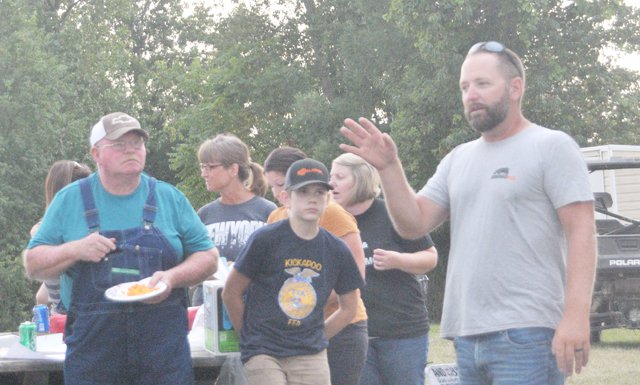
“It’s been awesome since we got the cattle out on pasture,” Josh Ostrem said enthusiastically. “I used to spend all my time hauling manure, and now I haven’t had to do that all summer.”
Josh explained to the group that they have broken their pasture area into two sections. The one higher up on the hillside currently contains the cows that are calving. The lower pasture goes down to the creek, and allows the cattle to access shade and water in the heat of the day.
“We put permanent dividers in the woods, with gates at the top and bottom,” Josh said. “Now moving the cattle from paddock to paddock literally takes me only about 10 minutes.”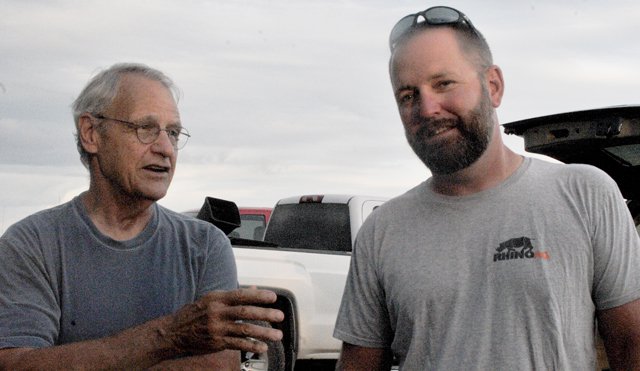

Jim Munsch, an experienced grazing consultant that works with the council, explained that the benefits from the project will be both immediate as well as long-term.
“Right out of the gate, we know that installing this grazing system on some of their farm’s more erodible lands will save between 250 and 300 tons of soil per year,” Munsch said. “This will immediately allow their farm to achieve the USDA-NRCS goals of preventing soil erosion.”
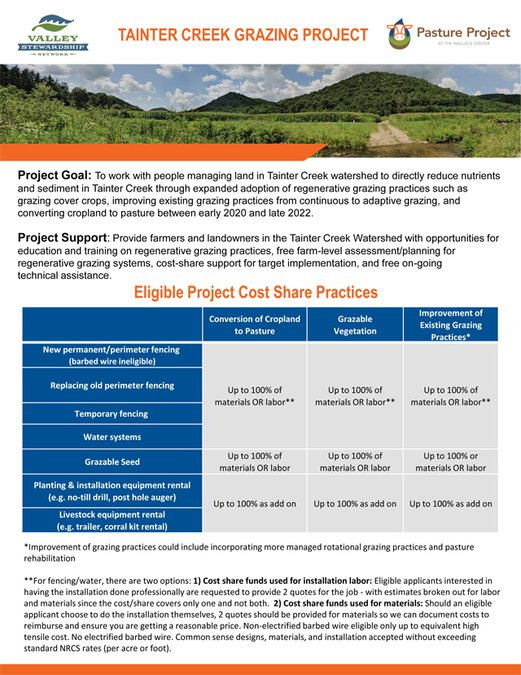
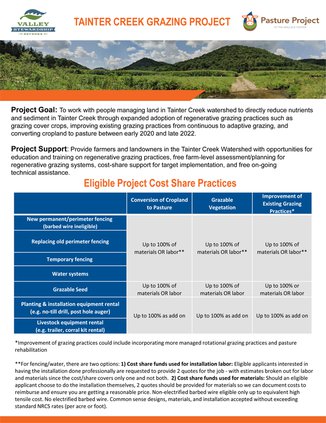
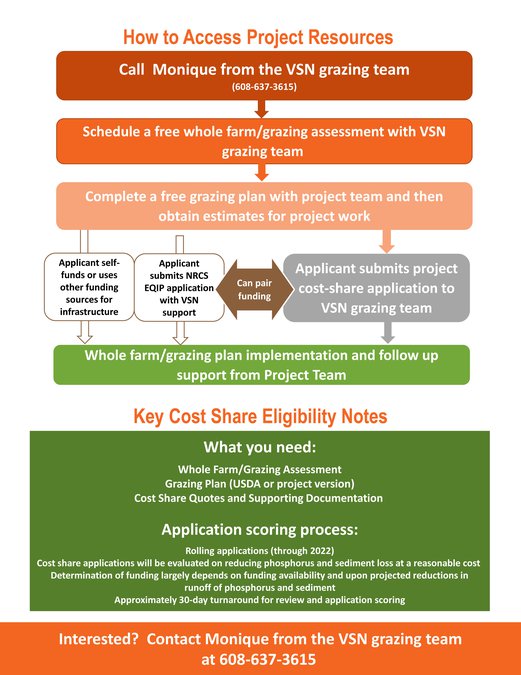
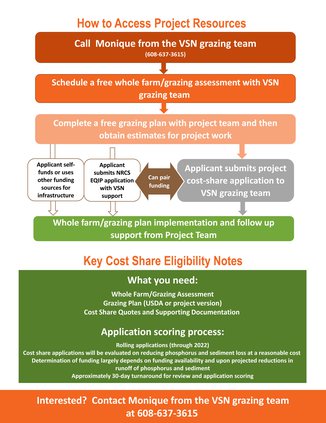
Tainter grazing project
The Tainter Creek Watershed Council and the Wallace Center have partnered in a three-year project to provide funding to farmers interested in converting some of their acres to managed rotational grazing in the watershed.
“This program is basically EQIP-light,” Munsch explained to the group. “The funding is there for some of the same practices that EQIP will fund, but is also a little quicker to navigate through the process and put the practices on the land.”
“Another really important difference between the two funding sources is that with the Wallace Center grants, a farmer will receive ongoing technical assistance from Jim Munsch and Dennis Rooney,” Valley Stewardship Network’s Monique Hassman added.
The stated goal of the project is:
“To work with people managing land in Tainter Creek watershed to directly reduce nutrients and sediment in Tainter Creek through expanded adoption of regenerative grazing practices such as grazing cover crops, improving existing grazing practices from continuous to adaptive grazing, and converting cropland to pasture between early 2020 and late 2022.”
The funding will pay for seed for pasture, perimeter and paddock fencing, installation of watering systems, livestock equipment rental, and seeding equipment rental. Ultimately, the Wallace Center will be conducting a study to correlate improvements in the surface water quality of Tainter Creek with an increase in acres in the watershed dedicated to grazing.


If you farm in the Tainter Creek Watershed, the way to access the program is:
1. Contact Monique Hassman from the Valley Stewardship Network Grazing Team at 608-637-3615
2. Schedule your free whole farm/grazing assessment
3. Complete a free grazing plan with the project team and then obtain estimates for project work
Jeff Ostrem, one of the founding members of the watershed council along with his brother-in-law Grant Rudrud, is the first farmer in the watershed to move through the approval process. Interested landowners work with Jim Munsch to do a whole farm plan. This involves a farm walkover, extensive mapping, and discussion of the farmer’s goals. From there, the farmer will go on to work with longtime grazier and grazing consultant Dennis Rooney on writing a grazing plan.
“We have about 12 other farmers in the watershed that have taken the preliminary steps to investigate what we can offer,” Jim Munsch said. “They’re thinking about it and we hope that we can begin to move forward with some or all of them in the near future.
According to Hassman, those farmers have received map suites of their land - aerial imagery, Light Detection and Ranging (LiDAR), contours, and soil types/slope, and have completed a whole farm assessment. Some of these applicants have also continued on to the next step - having a grazing plan written. Some also work with Valley Stewardship Network to implement other projects (for example putting in Prairie STRIPs).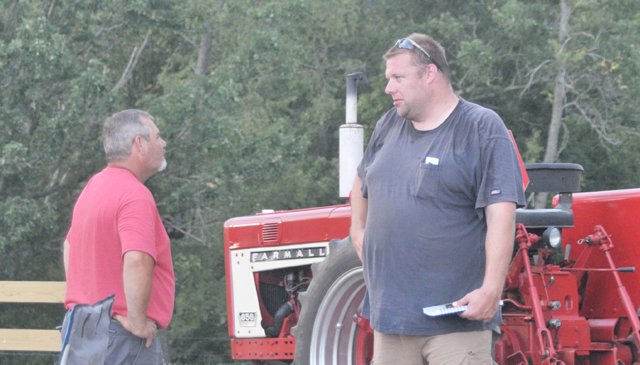

In other business
In other business, the Tainter Creek Watershed Council members:
• heard from Berent Froiland that the watershed council still has funds available to install cover crops in the 2020 season on 825 acres, at $25 per acre
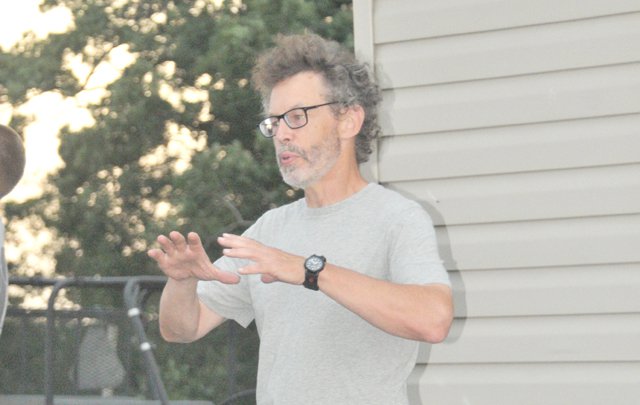

• heard from Valley Stewardship Network’s Dave Krier about the group’s funding available to help landowners install prairie strips in a portion of their acres to hold water and reduce runoff of nutrients–he said there are currently six installations in the Tainter Creek Watershed, including one on Kolstad Road that is intended to be grazed. Krier said that one of the advantages of grazing a prairie strip is that it provides warm season grasses which do better in drought conditions
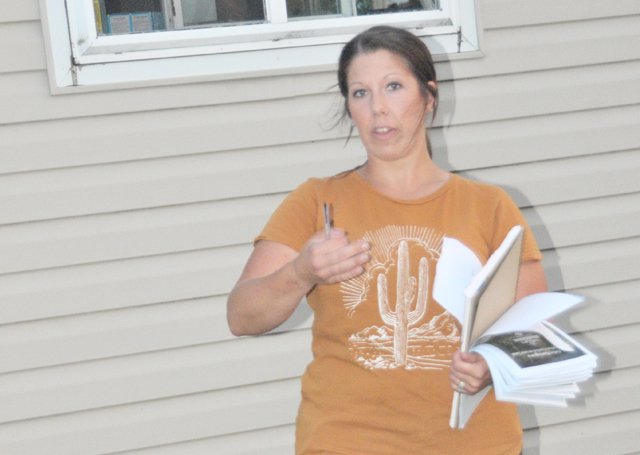
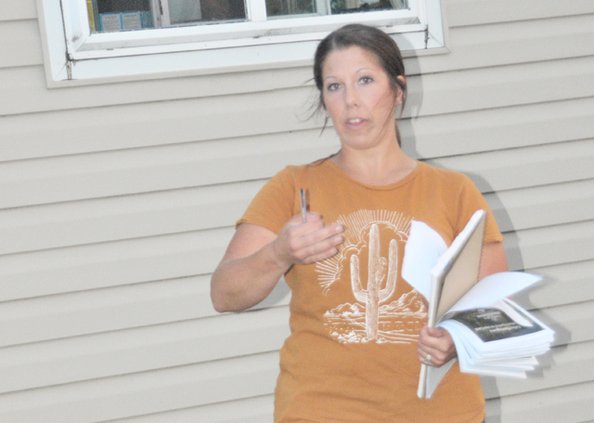
• heard from Dani Heisler-Woodill, a farmer in the watershed and now group coordinator on staff at Valley Stewardship Network, who led the group in discussion of applying for a 2021 DATCP Producer-Led Watershed Council grant. Some ideas the group had for funding include:


- Watershed signs at key entrances to the watershed
- Cooperator signs for farms indicating membership in the watershed council and activities to protect Tainter Creek
- Market research to identify markets for the various products being produced on farms in the watershed, including a survey of what famers in the watershed are producing
• agreed that the next meeting will take place back at Brad Robson’s farm in Hornby Hollow on Saturday, September 19, at 1 p.m.–at that field day, participants will have a chance to take another look at the experiments Robson did with planting covers, and see the results–Robson may try to do some soil pit demonstrations in some of his fields.




